Unveiling the 12 Principles of Animation in Adobe Animate: A Comprehensive Guide for Animators


Animation, the art of bringing life to static images, has become an integral part of modern storytelling. Adobe Animate, a powerful animation software, empowers creators with a comprehensive suite of tools to bring their visions to life. At the heart of animation lies the 12 Principles of Animation, a set of guidelines established by legendary animator Ollie Johnston and Frank Thomas that serve as a foundation for creating fluid, believable, and engaging animations.
4.7 out of 5
| Language | : | English |
| File size | : | 21752 KB |
| Screen Reader | : | Supported |
| Print length | : | 368 pages |
In this article, we will embark on a detailed exploration of the 12 Principles of Animation in the context of Adobe Animate, providing practical insights, examples, and exercises to help you master this essential animation framework.
1. Squash and Stretch
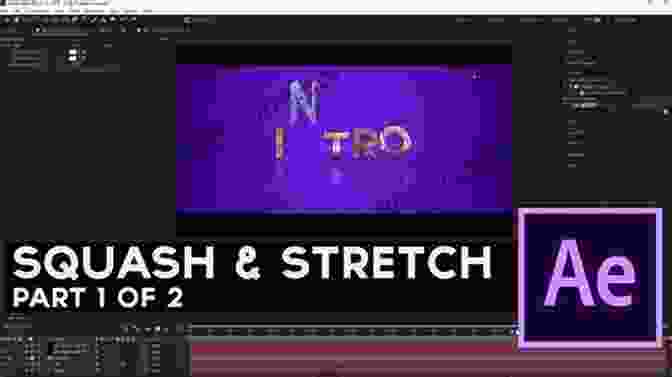
Squash and stretch involves distorting the shape of an object to accentuate its motion. When an object compresses or expands, it creates the illusion of weight, elasticity, and movement. In Adobe Animate, you can apply the "Free Transform" tool to manipulate the shape of objects, creating a squash and stretch effect.
Exercise: Animate a bouncing ball using the squash and stretch technique. Start by creating a circular shape, then compress it as it impacts the ground and expand it as it rebounds.
2. Anticipation
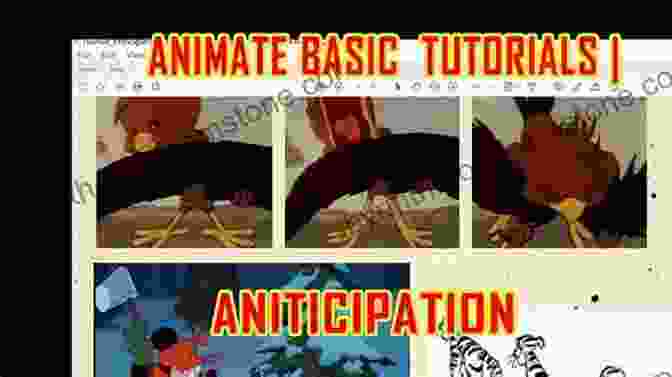
Anticipation prepares the audience for an upcoming action. It creates a sense of tension and expectation by showing a subtle movement or gesture that hints at the character's intention. In Adobe Animate, you can use the "Tweening" feature to create anticipation by gradually increasing the movement speed before the main action.
Exercise: Animate a character jumping. Start by showing the character slightly crouching, then gradually increase the speed of their movement as they jump up.
3. Staging
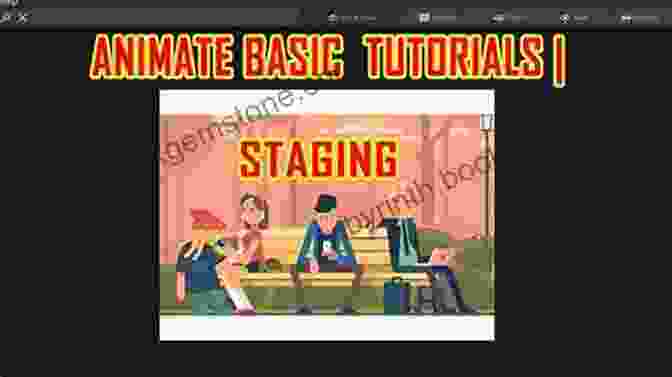
Staging involves arranging the elements of your animation to clearly communicate the story and direct the audience's attention. It requires careful placement of characters, objects, and camera angles. In Adobe Animate, you can use layers, camera controls, and motion paths to create effective staging.
Exercise: Create a scene where a character walks across a room. Use staging to guide the viewer's eye from the character's entry to their exit.
4. Straight Ahead Action and Pose to Pose

Straight ahead animation involves drawing each frame sequentially, while pose to pose animation focuses on creating key poses and then interpolating the frames in between. Adobe Animate supports both methods through its frame-by-frame and tweening capabilities.
Exercise: Animate a character running using both straight ahead action and pose to pose techniques. Compare the results and observe the differences in fluidity and control.
5. Follow Through and Overlapping Action
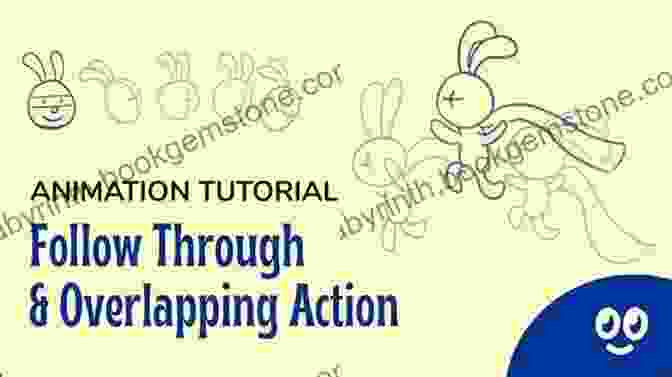
Follow through involves continuing the motion of an object or body part after the main action has stopped. Overlapping action refers to the idea that different parts of an object or body can move at different speeds simultaneously. In Adobe Animate, you can use the "Motion Editor" to refine the timing and sequencing of these movements.
Exercise: Animate a character throwing a ball. Add follow through by showing the character's arm continuing to move after the ball has been released, and overlapping action by having the character's hair and clothing move separately.
6. Slow In and Slow Out

Slow in and slow out refers to the principle of gradually increasing and decreasing the speed of an object's movement. This creates a more natural and realistic effect, as objects rarely accelerate or decelerate instantaneously. In Adobe Animate, you can adjust the easing of your animations using the "Motion Editor's" velocity graphs.
Exercise: Animate a character jumping up and down. Apply a slow in and slow out easing to make the movement feel more fluid and realistic.
7. Arcs
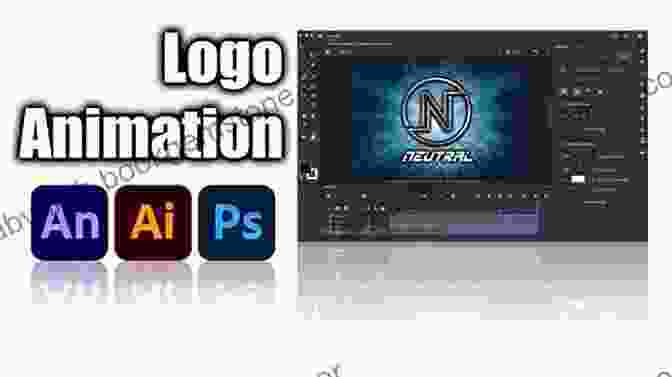
Objects in motion tend to follow curved paths called arcs. In animation, using arcs creates a sense of naturalism and fluidity. Adobe Animate provides various tools for drawing and manipulating arcs, such as the "Pen Tool" and the "Arc Tool."
Exercise: Animate a character swimming. Create smooth and graceful movements by using arcs to guide the character's arm strokes.
8. Secondary Action
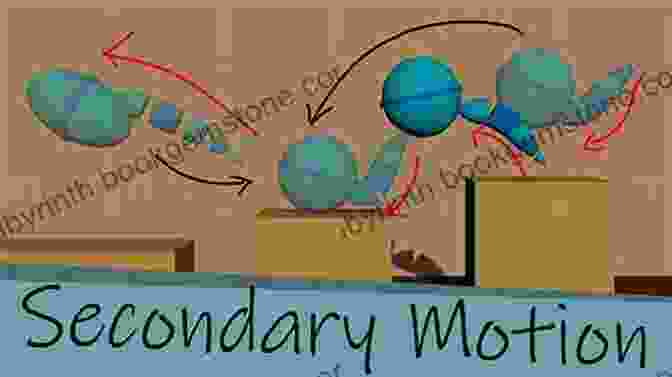
Secondary action refers to additional movements or details that enhance the realism and complexity of an animation. These actions help make the animation feel more alive and believable. In Adobe Animate, you can add secondary actions by creating additional layers and animating them independently.
Exercise: Animate a character walking. Add secondary actions such as swinging arms, swaying hair, or blinking eyes to bring the character to life.
9. Timing
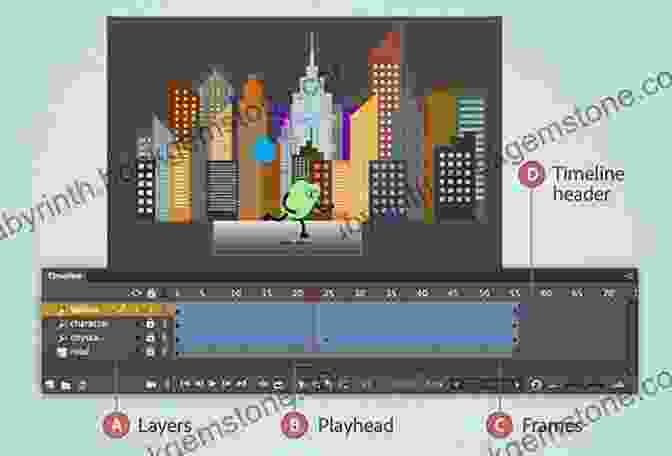
Timing is crucial in animation, as it determines the speed, duration, and rhythm of your movements. In Adobe Animate, you can control timing using the "Timeline" panel, adjusting the frame rates and durations of your animations.
Exercise: Animate a character bouncing a ball. Vary the timing of the bounces to create different effects, such as a slow and playful bounce or a fast and energetic bounce.
10. Exaggeration
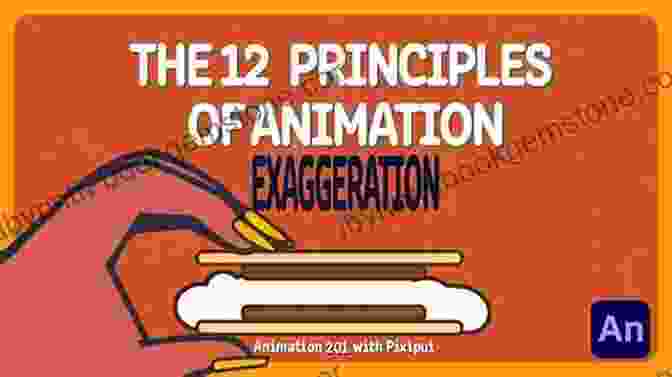
Exaggeration is a conscious distortion of reality to emphasize an emotion or action. It can create humorous, dramatic, or stylistic effects. In Adobe Animate, you can use various techniques to exaggerate, such as distorting shapes, adding extra frames, or using exaggerated expressions.
Exercise: Animate a character laughing hysterically. Exaggerate the character's movements, mouth shape, and facial expressions to create a comical and over-the-top effect.
11. Solid Drawing

Solid drawing refers to the fundamentals of drawing, including perspective, anatomy, and shading. A strong foundation in solid drawing is essential for creating believable and visually appealing animations. Adobe Animate provides various tools and resources to help animators improve their drawing skills.
Exercise: Practice drawing a character from different angles and perspectives. Focus on accurately capturing the character's anatomy and proportions.
12. Appeal
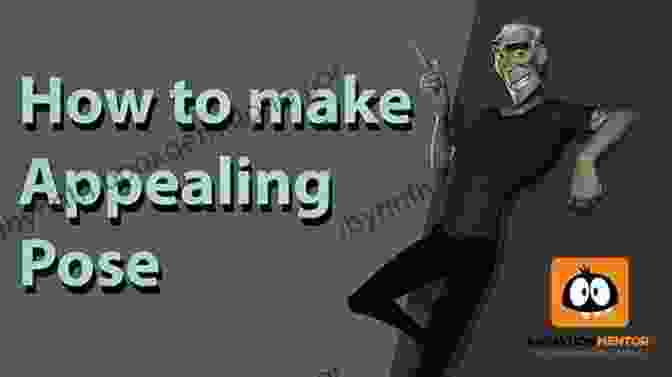
Appeal refers to the overall attractiveness and likability of your characters and animations. It's about creating characters that the audience can relate to, connect with, and root for. In Adobe Animate, you can create appealing characters by paying attention to their design, personality, and expressions.
Exercise: Design an original character that is both visually appealing and emotionally engaging. Give the character a unique personality and backstory to make it relatable and unforgettable.
Mastering the 12 Principles of Animation in Adobe Animate empowers animators with a comprehensive framework for creating fluid, realistic, and engaging animations. By understanding and applying these principles, animators can bring their visions to life, captivating audiences and leaving a lasting impression.
Remember, animation is an art form that requires practice, patience, and a willingness to experiment. Utilize the tools and exercises provided in this article to hone your skills, and continue exploring the endless possibilities that Adobe Animate offers. With dedication and creativity, you can create stunning animations that inspire, entertain, and connect with the hearts of your viewers.
4.7 out of 5
| Language | : | English |
| File size | : | 21752 KB |
| Screen Reader | : | Supported |
| Print length | : | 368 pages |
Do you want to contribute by writing guest posts on this blog?
Please contact us and send us a resume of previous articles that you have written.
 Best Book
Best Book Page Flip
Page Flip Bookshelf
Bookshelf Literary loom
Literary loom Chapter
Chapter Bookish
Bookish PageTurner
PageTurner Bibliophile
Bibliophile Story
Story Inkwell
Inkwell Bookworm
Bookworm Labyrinth
Labyrinth Plot Twist
Plot Twist Prose
Prose Paperback
Paperback Storyteller
Storyteller Sanctuary
Sanctuary Fiction
Fiction Reading
Reading Chronicle
Chronicle Read
Read Sam Branson
Sam Branson Luca Turin
Luca Turin Cristy C Road
Cristy C Road Dan Simmons
Dan Simmons Gene Wolfe
Gene Wolfe Paula Giddings
Paula Giddings Nancey Cummings
Nancey Cummings Daniel Abraham
Daniel Abraham John Luther Adams
John Luther Adams Connie Mcbride
Connie Mcbride Laurent Dubois
Laurent Dubois Maya Angelou
Maya Angelou Tracy Lambert
Tracy Lambert Susan Linden Emde
Susan Linden Emde Yuriko Saito
Yuriko Saito Craig Johnson
Craig Johnson Warren Murphy
Warren Murphy Pat Grillo
Pat Grillo Colin Jones
Colin Jones Janet Koplos
Janet Koplos Issa Rae
Issa Rae Yutaka Yazawa
Yutaka Yazawa Ann Fessler
Ann Fessler Maggie Rowe
Maggie Rowe Marie Brennan
Marie Brennan Yoko Hatta
Yoko Hatta Tracey Lange
Tracey Lange Dan X Solo
Dan X Solo T Scott Bryan
T Scott Bryan Jim Hutchinson
Jim Hutchinson Eric Musgrave
Eric Musgrave Mary Alice Monroe
Mary Alice Monroe Connie Willis
Connie Willis P A Piatt
P A Piatt Ella Barrick
Ella Barrick L A Braun
L A Braun Maham Johnson
Maham Johnson Joshua T Calvert
Joshua T Calvert Darren Critchley
Darren Critchley Susan Hayes
Susan Hayes John Baxter
John Baxter Dennis Lehane
Dennis Lehane Virginia Matheson Hooker
Virginia Matheson Hooker Ernest J Gaines
Ernest J Gaines Fiona Ferris
Fiona Ferris Siri Hustvedt
Siri Hustvedt Karen Stocker
Karen Stocker William Schoell
William Schoell Garry Mcgee
Garry Mcgee Mark Cramer
Mark Cramer Thaddeus Carhart
Thaddeus Carhart Kristen Britain
Kristen Britain True Kelley
True Kelley Steve Reifenberg
Steve Reifenberg James Patterson
James Patterson Grady Hendrix
Grady Hendrix Sara Ackerman
Sara Ackerman Alexa West
Alexa West Damion Hunter
Damion Hunter Michelle L Hardy
Michelle L Hardy Danny Trejo
Danny Trejo Susan Yeates
Susan Yeates Lin Wellford
Lin Wellford Mary Paik Lee
Mary Paik Lee Massimiliano Musina
Massimiliano Musina Dakota Krout
Dakota Krout Harry Lorayne
Harry Lorayne T J S George
T J S George Rory Miller
Rory Miller R Allen Chappell
R Allen Chappell C F Jernigan
C F Jernigan Lisa Yaszek
Lisa Yaszek J A Johnstone
J A Johnstone Grace Goodwin
Grace Goodwin Jeffrey Alford
Jeffrey Alford Victor Villasenor
Victor Villasenor Jane Sutcliffe
Jane Sutcliffe Emma Larkin
Emma Larkin Ernst Bergen
Ernst Bergen Olan Thorensen
Olan Thorensen Robert Silverberg
Robert Silverberg Laura Donnelly Bethmann
Laura Donnelly Bethmann Steven Collins
Steven Collins Ellie Taylor
Ellie Taylor Lorraine Bartlett
Lorraine Bartlett Joan Didion
Joan Didion Sarah Thornton
Sarah Thornton Eric Trueheart
Eric Trueheart John Humphries
John Humphries Ron Celano
Ron Celano Susan Cross
Susan Cross James Alan Gardner
James Alan Gardner Karen Mcnally
Karen Mcnally James Seabright
James Seabright Donna Jackson Nakazawa
Donna Jackson Nakazawa Stephen Armstrong
Stephen Armstrong Nancy Marchant
Nancy Marchant Dale Robinson
Dale Robinson Cp Mchugh
Cp Mchugh Piera Sonnino
Piera Sonnino Graham Wilson
Graham Wilson Nigel Barley
Nigel Barley Dave Willmarth
Dave Willmarth Leonard S Marcus
Leonard S Marcus Kenya Clark
Kenya Clark Mark Bourrie
Mark Bourrie Isadora Duncan
Isadora Duncan Clive Johnson
Clive Johnson Khadizhat Witt
Khadizhat Witt Tinia Montford
Tinia Montford David W Galenson
David W Galenson Mancho Soto
Mancho Soto Domnica Radulescu
Domnica Radulescu Hal Vaughan
Hal Vaughan Torre Deroche
Torre Deroche Tom Geng
Tom Geng Craig Seymour
Craig Seymour Scott Moon
Scott Moon Sarah Culberson
Sarah Culberson Cody Whitfill
Cody Whitfill Dan Popp
Dan Popp Prince
Prince Steven Skaggs
Steven Skaggs Michael Shnayerson
Michael Shnayerson Jennifer M Eaton
Jennifer M Eaton Jeromy Hopgood
Jeromy Hopgood Coralie Bickford Smith
Coralie Bickford Smith Ingrid Sischy
Ingrid Sischy Julie Lythcott Haims
Julie Lythcott Haims Lorne Ryburn
Lorne Ryburn Robert Appleton
Robert Appleton Gina Yashere
Gina Yashere Lan Sluder
Lan Sluder Kristina Mcmorris
Kristina Mcmorris Nick Lyons
Nick Lyons Harold P Howard
Harold P Howard Helen Augur
Helen Augur Henning Nelms
Henning Nelms Neal Stephenson
Neal Stephenson Jennifer Thompson Cannino
Jennifer Thompson Cannino Kyle Widner
Kyle Widner Daniel L Bray
Daniel L Bray Nick Jans
Nick Jans Explorer Publishing
Explorer Publishing Lina Rather
Lina Rather David Drake
David Drake G B Edwards
G B Edwards Ward Larsen
Ward Larsen Dan Abnett
Dan Abnett John Tanner
John Tanner Gabrielle Zevin
Gabrielle Zevin Keith Recker
Keith Recker Cliff Mass
Cliff Mass Dan Fox
Dan Fox Jason M Hough
Jason M Hough Peter Parnell
Peter Parnell Hannah Strong
Hannah Strong Twyla Tharp
Twyla Tharp Coryne Hall
Coryne Hall Marc Taro Holmes
Marc Taro Holmes David Bischoff
David Bischoff Craig Martelle
Craig Martelle Collins Dictionaries
Collins Dictionaries Craig Carey
Craig Carey Peter Hanson
Peter Hanson Les Standiford
Les Standiford Max Allan Collins
Max Allan Collins Harvey J Kaye
Harvey J Kaye David Walton
David Walton Thefirstdefier
Thefirstdefier Michael Henry
Michael Henry Amaya Black
Amaya Black David Cousens
David Cousens T R Napper
T R Napper S A Snyder
S A Snyder Grace Barrington Shaw
Grace Barrington Shaw Dr Quinta
Dr Quinta Karolyn Kiisel
Karolyn Kiisel Michael Reardon
Michael Reardon Hyeonseo Lee
Hyeonseo Lee Colleen Hall
Colleen Hall Dan Grunfeld
Dan Grunfeld T D Lake
T D Lake John Grisham
John Grisham Natasha Sims
Natasha Sims Love Belvin
Love Belvin Colson Whitehead
Colson Whitehead Ronald Pratt
Ronald Pratt Crispin Sartwell
Crispin Sartwell Sarena Ulibarri
Sarena Ulibarri Jeanne Farr Mcdonnell
Jeanne Farr Mcdonnell Jeremy Kroeker
Jeremy Kroeker Julia Chiles
Julia Chiles Iris Apfel
Iris Apfel Marius Kociejowski
Marius Kociejowski Melissa Stephenson
Melissa Stephenson Dalai Lama
Dalai Lama Julissa Arce
Julissa Arce Diana Hollingsworth Gessler
Diana Hollingsworth Gessler Marko Kloos
Marko Kloos Carl Sagan
Carl Sagan Monika Forsberg
Monika Forsberg Crystal Allen
Crystal Allen Marcus Richardson
Marcus Richardson Craig Melvin
Craig Melvin Gerda Weissmann Klein
Gerda Weissmann Klein Euclides Da Cunha
Euclides Da Cunha Coert Voorhees
Coert Voorhees Margaret Coker
Margaret Coker Craig Briggs
Craig Briggs Cornelius N Grove
Cornelius N Grove Yelapa Memo
Yelapa Memo Michelle Damiani
Michelle Damiani Hannah Hart
Hannah Hart Hayley Stone
Hayley Stone Janet Catherine Berlo
Janet Catherine Berlo Karen O Brien
Karen O Brien Yunte Huang
Yunte Huang Cookie Mueller
Cookie Mueller Reprint Edition Kindle Edition
Reprint Edition Kindle Edition Marisol Enchufa
Marisol Enchufa Dan Zehr
Dan Zehr Clyde D Souza
Clyde D Souza Crypto Dukedom
Crypto Dukedom Jessica Kerwin Jenkins
Jessica Kerwin Jenkins Gael Berton
Gael Berton Dana Facaros
Dana Facaros Wyclef Jean
Wyclef Jean W B Yeats
W B Yeats Synithia Williams
Synithia Williams Lisanne Norman
Lisanne Norman Cory Doctorow
Cory Doctorow Jeff Tanyard
Jeff Tanyard Coryn Anaya Clarke
Coryn Anaya Clarke Brandon Q Morris
Brandon Q Morris Tim Judah
Tim Judah Xinran
Xinran Rebecca Hardiman
Rebecca Hardiman Tom Poland
Tom Poland Liza Rodman
Liza Rodman Elizabeth Reid
Elizabeth Reid J J Green
J J Green Beverly Jenkins
Beverly Jenkins Bill Geist
Bill Geist Irene Levin Berman
Irene Levin Berman Irving Layton
Irving Layton Kristina Evans
Kristina Evans Colin Souness
Colin Souness Eat Like A Local
Eat Like A Local June Emerson
June Emerson Cynthia Clampitt
Cynthia Clampitt Colin Thubron
Colin Thubron Dan Gheno
Dan Gheno Frances Dinkelspiel
Frances Dinkelspiel Dahlma Llanos Figueroa
Dahlma Llanos Figueroa Richard K Morgan
Richard K Morgan Sue Monk Kidd
Sue Monk Kidd Em Brown
Em Brown Chris Strodder
Chris Strodder Dallas Shaw
Dallas Shaw D Ward Cornell
D Ward Cornell Robert De La Sizeranne
Robert De La Sizeranne Bob Martin
Bob Martin Roy Kinnard
Roy Kinnard J C Romero
J C Romero Trenae
Trenae Fiona Davis
Fiona Davis Zeena Shah
Zeena Shah Cristela Alonzo
Cristela Alonzo Clementina Oluchi Augustine
Clementina Oluchi Augustine Culture Smart
Culture Smart Dan Diggles
Dan Diggles Nick Snelling
Nick Snelling Daigo Murasaki
Daigo Murasaki Thrive Language Audiobooks
Thrive Language Audiobooks Ben Ohmart
Ben Ohmart Karen Cheung
Karen Cheung T J Clark
T J Clark David E Wilkins
David E Wilkins Ted Andrews
Ted Andrews Peter Ninnes
Peter Ninnes Denise Hamilton
Denise Hamilton Eleanor Ford
Eleanor Ford John Logan
John Logan Danielle Krysa
Danielle Krysa Craig A Falconer
Craig A Falconer Fethi Mansouri
Fethi Mansouri Tom Satterly
Tom Satterly Sheila Montilla
Sheila Montilla Jason Cochran
Jason Cochran Dk Eyewitness
Dk Eyewitness D J Holmes
D J Holmes Serena Gilbert
Serena Gilbert Daniel Ankele
Daniel Ankele Linda Riesenberg Fisler
Linda Riesenberg Fisler R P Jones
R P Jones Cora Tesheira
Cora Tesheira John Parascandola
John Parascandola Robert E Innis
Robert E Innis Joe Starita
Joe Starita Michelle Brown
Michelle Brown Rami Yelda
Rami Yelda Joy Castro
Joy Castro Kate Moore
Kate Moore Leah Gallo
Leah Gallo Marya Hornbacher
Marya Hornbacher Insun Lee
Insun Lee Jordan Matter
Jordan Matter Niall Teasdale
Niall Teasdale V D Bucket
V D Bucket William Powers
William Powers Sean Hartlieb
Sean Hartlieb Carrie Stuart Parks
Carrie Stuart Parks Pierre Alex Jeanty
Pierre Alex Jeanty Cristina Salat
Cristina Salat Jodi Picoult
Jodi Picoult Jerry Beck
Jerry Beck Tc Manning
Tc Manning Rayna Tyler
Rayna Tyler Carlos M N Eire
Carlos M N Eire Cornelius C Kubler
Cornelius C Kubler Jeremy Robert Johnson
Jeremy Robert Johnson Pat Kramer
Pat Kramer Diana Friel Mcgowin
Diana Friel Mcgowin Jerry Brotton
Jerry Brotton Barrington Barber
Barrington Barber Minal Hajratwala
Minal Hajratwala Yair Lapid
Yair Lapid Theo Dorgan
Theo Dorgan Porochista Khakpour
Porochista Khakpour Faye Moskowitz
Faye Moskowitz Terry Darlington
Terry Darlington Gianrico Carofiglio
Gianrico Carofiglio Elizabeth May
Elizabeth May Jon Breakfield
Jon Breakfield Sandee Cohen
Sandee Cohen Dana Sachs
Dana Sachs Ronald G Knapp
Ronald G Knapp Pearl Tate
Pearl Tate Sean Williams
Sean Williams D K Pike
D K Pike Irene Aylworth Douglass
Irene Aylworth Douglass Joy Deja King
Joy Deja King Dallen J Timothy
Dallen J Timothy John Paul Brammer
John Paul Brammer Jay Ryan
Jay Ryan Douglas Preston
Douglas Preston Danica Roem
Danica Roem Andrew Patrick Nelson
Andrew Patrick Nelson Marc Canter
Marc Canter Criss Angel
Criss Angel Ian Whitaker
Ian Whitaker L E Modesitt Jr
L E Modesitt Jr Jacques D Amboise
Jacques D Amboise Karl Johnson
Karl Johnson Sarah Jackson
Sarah Jackson Tony Pike
Tony Pike Stephen Brooks
Stephen Brooks Myriam Gurba
Myriam Gurba Daniel Burleigh Parkhurst
Daniel Burleigh Parkhurst Craig W Stanfill
Craig W Stanfill Craig Ferguson
Craig Ferguson Mitsuo Kure
Mitsuo Kure Blair Polly
Blair Polly Mia Black
Mia Black Fred Ladd
Fred Ladd Gina Mckinnon
Gina Mckinnon Kelly Gay
Kelly Gay M R Forbes
M R Forbes Jake Spicer
Jake Spicer Mary Boone
Mary Boone Clive Cussler
Clive Cussler Sue Tabashnik
Sue Tabashnik Ian Frazier
Ian Frazier Jaclyn Bailie
Jaclyn Bailie Mia Michaels
Mia Michaels Scott Kenemore
Scott Kenemore Tom Hill
Tom Hill Dawn Turner Trice
Dawn Turner Trice Olivia Campbell
Olivia Campbell Isabella Maldonado
Isabella Maldonado Craig Mod
Craig Mod Norman Hathaway
Norman Hathaway Dale Brown
Dale Brown Eva Heller
Eva Heller Dennis Valder
Dennis Valder Jane Hamilton
Jane Hamilton D Dauphinee
D Dauphinee Baby Professor
Baby Professor Leslie Cabarga
Leslie Cabarga Donald Spoto
Donald Spoto Matthew Quirk
Matthew Quirk Megan Lynch
Megan Lynch Cynthia Royce
Cynthia Royce Lisa Morton
Lisa Morton Ketut Suasti
Ketut Suasti Saad Z Hossain
Saad Z Hossain Frank Bruni
Frank Bruni Sara Wheeler
Sara Wheeler Henry James
Henry James Cricut Maker
Cricut Maker Mark Dawson
Mark Dawson Philip Simmons
Philip Simmons Donna Zakowska
Donna Zakowska John Mcwade
John Mcwade Yuri Ulengov
Yuri Ulengov Parvati Sharma
Parvati Sharma Meredith Little
Meredith Little Cookie Johnson
Cookie Johnson Kathryn Mcmaster
Kathryn Mcmaster Kevin J Anderson
Kevin J Anderson Dani Dyer
Dani Dyer Cyrus Highsmith
Cyrus Highsmith Karen Swan
Karen Swan Terri Kozlowski
Terri Kozlowski Eric Jerome Dickey
Eric Jerome Dickey Gerry Virtue
Gerry Virtue David Maraniss
David Maraniss David Mikics
David Mikics D J Bodden
D J Bodden Jon May
Jon May D Scott Bowers
D Scott Bowers Todd Geers
Todd Geers Gerald Everett Jones
Gerald Everett Jones Richard East
Richard East Joshua M Greene
Joshua M Greene Olivia Dade
Olivia Dade Kati Marton
Kati Marton Nelson Demille
Nelson Demille Connie Malamed
Connie Malamed Cyril W Beaumont
Cyril W Beaumont Nawoko
Nawoko Corky Parker
Corky Parker S M Anderson
S M Anderson Henry Koster
Henry Koster Nathan D Horowitz
Nathan D Horowitz Cynthia Saltzman
Cynthia Saltzman J Robert Kennedy
J Robert Kennedy Sujean Rim
Sujean Rim Sean Egan
Sean Egan George Saunders
George Saunders Mike Katz
Mike Katz Leila Guerriero
Leila Guerriero Marie Killilea
Marie Killilea Nicolas Lampert
Nicolas Lampert Clifford Irving
Clifford Irving William Evans
William Evans Roberto Pedreira
Roberto Pedreira Robert Isenberg
Robert Isenberg K C Jones
K C Jones Ian Douglas
Ian Douglas Dick J Reavis
Dick J Reavis Cynthia Newcomer Daniel
Cynthia Newcomer Daniel Steve Biddle
Steve Biddle Helen Armstrong
Helen Armstrong Gabrielle Selz
Gabrielle Selz Wade Motawi
Wade Motawi James Rosenquist
James Rosenquist Jessica Walstad
Jessica Walstad Dale Pollock
Dale Pollock Jay C Labarge
Jay C Labarge John Dennehy
John Dennehy Courtney Ragsdale
Courtney Ragsdale David Riley
David Riley Curatoria Draconis
Curatoria Draconis Conn Iggulden
Conn Iggulden Geoff Saunders
Geoff Saunders Steve Huston
Steve Huston Jennifer Brozek
Jennifer Brozek Sasha Duerr
Sasha Duerr Joan D Vinge
Joan D Vinge William J Burns
William J Burns Co Spinhoven
Co Spinhoven Brad Olsen
Brad Olsen Margaret Fletcher
Margaret Fletcher Dakota James
Dakota James Tim Vernooij
Tim Vernooij Ursula K Le Guin
Ursula K Le Guin Loretta Outwater Cox
Loretta Outwater Cox Deborah Davis
Deborah Davis David G Hartwell
David G Hartwell Dan Bigley
Dan Bigley Edward Johnston
Edward Johnston Deanna Amodeo
Deanna Amodeo David Kroese
David Kroese Cyn Alexander
Cyn Alexander Tony Rafael
Tony Rafael J Z Foster
J Z Foster Cornelius Tacitus
Cornelius Tacitus Taylor Fuller
Taylor Fuller Diane Cardaci
Diane Cardaci Roy Simmons
Roy Simmons Cynthia Leal Massey
Cynthia Leal Massey Lee Feigon
Lee Feigon Douglas Century
Douglas Century Kirstin Dow
Kirstin Dow Luis Alberto Urrea
Luis Alberto Urrea James Rubik
James Rubik Xiaolu Guo
Xiaolu Guo Dan Sugralinov
Dan Sugralinov D K Holmberg
D K Holmberg Eric Lax
Eric Lax Tana Stone
Tana Stone Eddie Robson
Eddie Robson Stephen Kinzer
Stephen Kinzer Clayton Thomas Muller
Clayton Thomas Muller Jeremy Ford
Jeremy Ford Daily Language Learning
Daily Language Learning
Light bulbAdvertise smarter! Our strategic ad space ensures maximum exposure. Reserve your spot today!

 Desmond FosterLan Sluder's Guide to the Cayes, Coast, and Beaches of Belize: The Ultimate...
Desmond FosterLan Sluder's Guide to the Cayes, Coast, and Beaches of Belize: The Ultimate... Griffin MitchellFollow ·11.2k
Griffin MitchellFollow ·11.2k Kazuo IshiguroFollow ·15.6k
Kazuo IshiguroFollow ·15.6k Clarence BrooksFollow ·9.3k
Clarence BrooksFollow ·9.3k Leo MitchellFollow ·16.1k
Leo MitchellFollow ·16.1k Calvin FisherFollow ·16.1k
Calvin FisherFollow ·16.1k Jessie CoxFollow ·3.5k
Jessie CoxFollow ·3.5k Harold BlairFollow ·11.8k
Harold BlairFollow ·11.8k Cody RussellFollow ·18.1k
Cody RussellFollow ·18.1k

 Billy Peterson
Billy PetersonStackin' Paper Part War Ready: A Comprehensive Guide to...
In today's competitive financial landscape,...

 Jedidiah Hayes
Jedidiah HayesDennis Valder: Unveiling the Enchanting World of Cuba's...
In the heart...

 Ryan Foster
Ryan FosterDelving into the Captivating Enigma of The Green Season...
In the verdant tapestry of literary...

 Jeremy Mitchell
Jeremy MitchellZapotec Helen Augur: A Visionary Leader and Cultural...
In the heart of...

 Larry Reed
Larry ReedSci-Fi Alien Warrior Romance: A Tribute to the Brides of...
In the vast expanse of the...
4.7 out of 5
| Language | : | English |
| File size | : | 21752 KB |
| Screen Reader | : | Supported |
| Print length | : | 368 pages |












